It’s a great time to be a foodie in DC – it seems like there’s a steady stream of restaurants popping up, each with their own unique cuisine and concept. Food culture as we know it is being redefined in the District – with the of various movements, such as “eating local”, to the increase in popularity of many new fast-casual restaurants.
On March 30, Georgetown University’s chapter of Spoon University will welcome prominent DC chefs to campus to participate in a panel about Washington’s changing food scene. Get a sneak peek of what the chefs have to say here.
Philip Thompson – Executive Chef at Capital Hilton
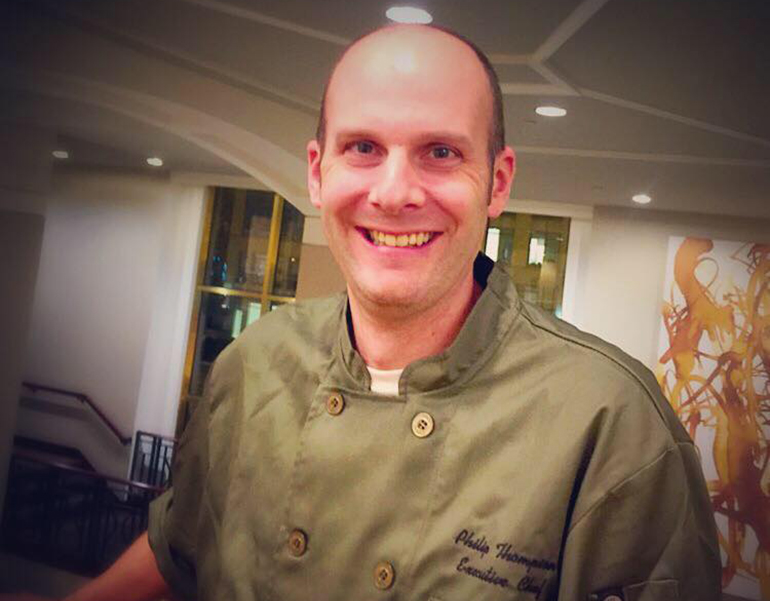
Photo courtesy of Philip Thompson
A self proclaimed “chef, beer brewer, wine enthusiast, and local and sustainable food supporter,” Chef Philip Thompson brings years of DC working experience to the panel. His food is delicious, his presentation flawless, and his willingness to experiment with unusual food combinations admirable. Check out his take on the changing DC food scene and his predictions for the future of cuisine.
Q: How has the DC food scene changed since your arrival at Capital Hilton?
A: When I came to the United States from England 10 years ago, DC was kind of stuffy and not really a great destination for restaurants. A lot has changed in that time; it’s now the hot destination that a lot of Chefs are looking to open restaurants in. A lot of that has to do with the effort the city has put into revitalizing neighborhoods.
Places like 14 St. Corridor, Shaw, Waterfront – all really nice neighborhoods that have totally changed and are now great places to open restaurants. I look at how many restaurants José Andrés has opened since I’ve been here; it’s a great sign and it encourages more of the top chefs to come to DC.
Q: What future changes do you anticipate, and which do you most look forward to?
A: DC still doesn’t have its own food identity the way other cities do. LA, New York, and New Orleans all have their own food culture; we have a lot of diversity but no specific identity and I think it will be interesting to see if we can establish what that identity of DC food is. There is a lot of focus on local these days, and the Chesapeake Bay is a great source of seafood, but that mainly influences Baltimore Cuisine.
I happen to think we are in a great area of the country for farming so there’s a lot of possibilities there. I think we are going back to our roots a lot in a way; molecular gastronomy became big but it’s still not big in the DC food culture yet. We are more down to earth. Urban Farming is something that really intrigues me and as a chef I want to explore it more.
Q: How do you perceive the typical “DC diner” to have evolved in the past few years?
A: The internet and social media are the biggest drivers of the dining scene these days – almost everyone has a smart phone. People are making reservations on their phone, ordering food, reviewing restaurants, and becoming food critics. My social media feeds are full of friends sharing videos on how to cook dishes; people’s access to information is much more extensive that it used to be. As a chef that forces us to be more creative and use different ingredients and techniques that people haven’t seen before.
People have molecular gastronomy kits at home now; they’re more exposed to things than before. I think it’s a great thing though, everyone should have the ability to cook a great meal for their family and friends. I think that technology has really helped improve the quality of food in this country too, chefs can go onto their phones and see photos of what diners are eating elsewhere and there’s constant pressure to keep upping your game.
Q: If you could only choose 3 foods to eat for the rest of your life, what would they be?
A: Anything fresh out of the garden is great to me; I love vegetables in all forms. Brussels Sprouts are always a favorite of mine in the winter. Bacon!… the single reason I could never be a vegetarian. It’s so versatile and embodies that sweet and savory combination that I love. Mushrooms. Mainly because I make “Shiitake Bacon” out of them. I love all the different flavors of mushrooms. I always keep a good supply of fresh and dried mushrooms in my pantry.
Bettina Stern – Co-founder of Chaia Taco
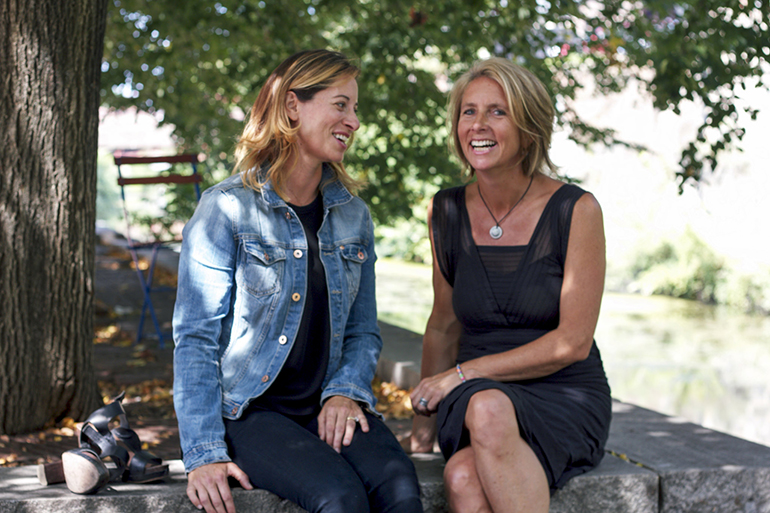
Photo courtesy of Chaia Taco
Thank this lady for bringing the first completely vegetarian taco shop to DC – and making it irresistible to both vegetarians and meat-eaters. Chaia’s tacos are making a wave in the Georgetown neighborhood and DC alike, as other restaurants follow its move to make a veggie-based diet more accesible to all. Listen to what she has to say about DC’s food culture, and how even a taco can have a part in it.
Q: What sets the DC food scene apart from those of other cities?
A: DC is getting younger by the minute. It is filled with people coming from all over – not only the US, but also globally. Rather than lacking an identity, DC’s food scene is game for new ideas and vibrant, exciting, important cuisines. Perhaps Chaia – which serves affordable, plant based tacos – represents something uniquely different by simply making vegetables taste delicious – and craveable.
Q: Chaia’s Instagram account is very well curated, with a unique aesthetic – how important do you believe social media is in influencing the food culture of a city?
A: Our social media has definitely built up a strong following. We refer to our tacos as “Insta-Bait”. They are beautiful and so is our Georgetown shop. I am not sure whether it has had any influence on the actual food culture, but it sure does make for pretty pictures.
Q: What is your favorite taco on the menu?
A: Our standard bearer: the mushroom taco. Rich umami flavor, served with tangy, fresh feta and a spicy roasted tomato + habanero salsa.
Nora Pouillon – Founder of Restaurant Nora
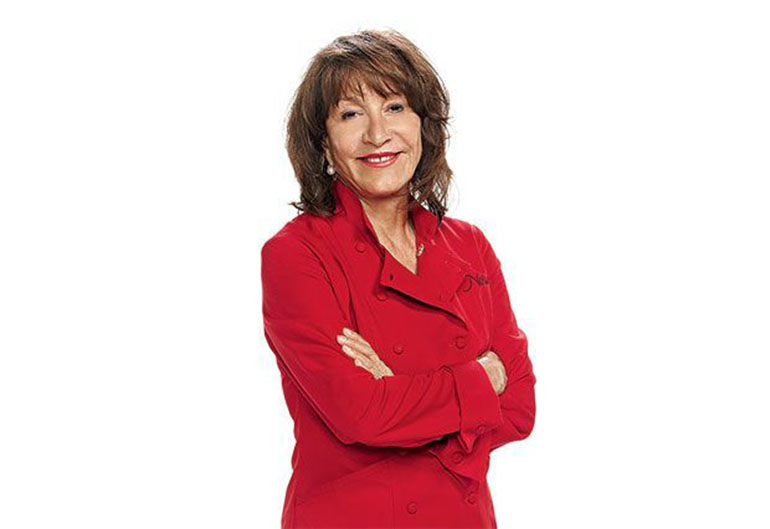
Photo courtesy of washingtonian.com
Meet Nora Pouillon, the founder of America’s first certified organic restaurant, and pioneer of developing “organic restaurant” standards. Her arrival to the District in the early 1970s was undoubtedly to a much different scene than that of today – check out what she has to say about how DC has changed over the last few decades, and how this change will continue in the future.
Q: What changes have you witnessed in the DC food scene in the last 20 years?
A: The change in the DC food scene is that now there are about 1,000 more restaurants in the DC area compared to 20 years ago, with an emphasis on bars, drinks, and small bites versus white table cloths.
Q: What future changes do you anticipate, and which do you most look forward to?
A: I think the future will bring many more ethnic restaurants, like Hawaiian, Afghani, Turkish, or Iranian. I look forward to ethnic restaurants being more organic and more local – no longer looking only at the bottom line and providing the cheapest food without regard for quality and nutrition and local farmers.
Q: How do you believe DC’s food culture will continue to progress in the future?
A: I think the food culture in DC will grow with more, and there are more chefs from around the country wanting to be represented in the nation’s capital. I think local food will remain in the forefront, and I hope that family and chain restaurants will become more health oriented and environmentally conscious.
Q: What is one food that you absolutely can’t live without?
A: I love all kinds of salads but basically I believe in a varied diet. I really love all kinds of food, except maybe, chitterlings (intestines) and tripe (stomach).
Eric Bruner-Yang – Founder of Toki Underground, Maketto, and Honeycomb
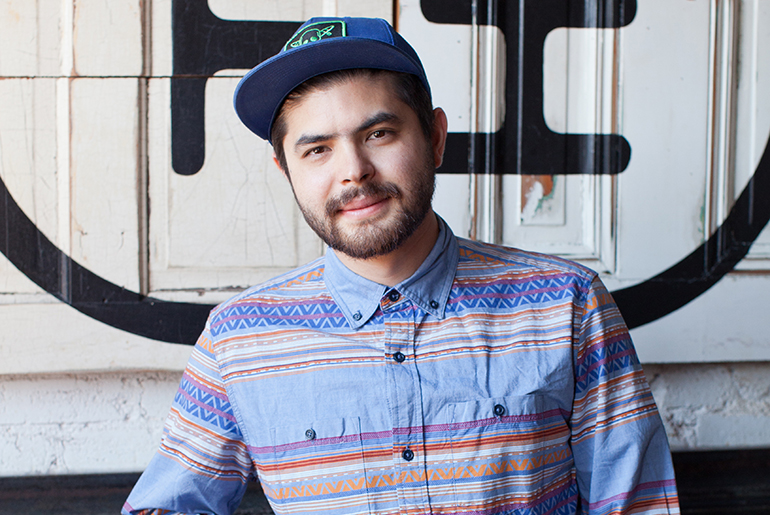
Photo courtesy of Erik Bruner-Yang
Eric Bruner-Yang is one to watch. Since his arrival in DC, he’s been taking the city by storm – opening two wildly popular restaurants as well as a local grocery at Union Market. Read more about how his restaurant concepts play a role in the DC community, and where he pictures these concepts moving in the future.
Q: How do you interact with the DC community through your restaurants?
A: I opened all of my businesses in the area that I moved to in 2007. I live down the street from Toki Underground and Maketto, and am just a quick walk or drive from Union Market where Honeycomb is. We built our concepts first and foremost as places to make the neighborhood dynamic. It’s really important to me that we always think about serving the local and non-local customers – folks that live on and around H Street are regulars and a big part of our community.
Q: How do you see your restaurants evolving with the changing DC food scene in the next few years?
A: Hopefully we are the ones that are forcing other people to evolve. We want Maketto to always be pushing the H Street neighborhood making sure it does not lose its historical of what it has always been. It will be interesting to see what the next few years holds.
Q: Where do you get inspiration for your restaurant concepts and dishes?
A: Inspiration comes from time off and world and domestic travel with my family. Even just hanging out with my family and cooking for them is huge.
Q: What are your favorite and least favorite food trends of the last few years?
A: Favorite food trends: doughnuts and the rise of coffee culture. Least favorite food trend: macarons.
Rob Wilder – Vice Chair of Think Food Group
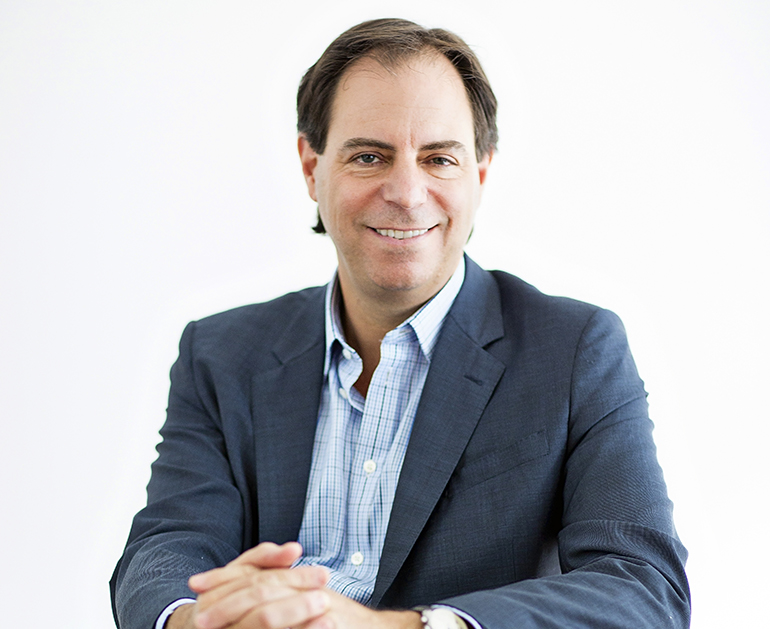
Photo courtesy of Cristina Krumsick
Rob Wilder of ThinkFoodGroup is committed to “changing the world through the power of food.” And he’s doing just that – through its 18 restaurants both in the DC area and nationwide, ThinkFoodGroup is influencing the way in which restaurants create and carry out food concepts. From the rise of “small plates” to the influx of international cuisine coming into popularity, DC is seeing unprecedented change from the influence of Wilder and ThinkFoodGroup.
Q: What influence has ThinkFoodGroup had on the food culture of DC?
A: It has been amazing to see the Penn Quarter neighborhood transform over the years; it’s a close-knit community and we’ve been proud to be a part of it for more than twenty years. At ThinkFoodGroup, we trained and inspired a generation of new chefs and entrepreneurs to pursue their dreams through creativity, commitment to their people and communities, and old fashioned hard work.
We are very proud of our talented teams, and it’s always great to see our chefs succeed, even beyond ThinkFoodGroup. Together we have made DC a unique culinary culture.
Q: How would you compare DC’s food scene to that of other cities?
A: In the last two decades, DC had to overcome its reputation as a transient political town with unsophisticated meat and potato taste. Now we are one of the most underrated food cities, with diverse and trendsetting chefs and concepts, and a vibrant entrepreneurial scene with new foods and restaurants every day. Plus, proximity to thought leaders in government and the nonprofit/policy worlds now makes our city one of the most important places in the world food movement.
Q: What has been the most interesting part of working in DC’s food scene?
A: It is a close, convivial community, but the best part has been witnessing and accelerating the transformational effect that good food has on neighborhoods and entire cities. Food and restaurants lead the way.
Susan Able – Editor-In-Chief of Edible DC; Panel Moderator
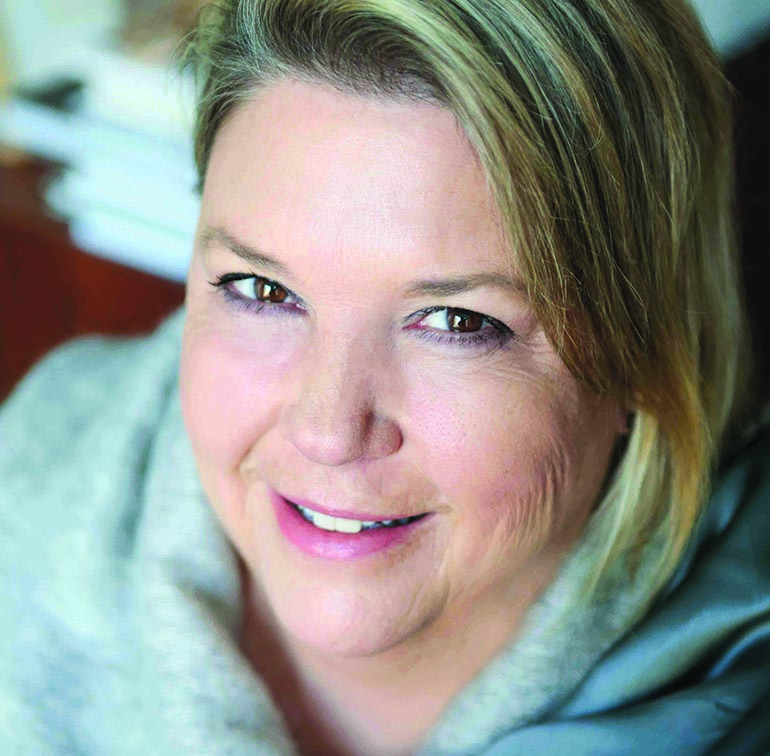
Photo courtesy of Susan Able
Our panel moderator has special expertise in the DC food scene – as editor-in-chief of the magazine Edible DC, she champions both “eating” and “reading” local. Her knowledge of local, authentic DC cuisine helps to illustrate the change that’s already occurred in the city as well as predict what’s to come in the future.
Q: How has the local food movement influenced both restaurants and diners?
A: The local food movement has slowly and steadily raised the issues about food sourcing, sustainability and traceability – and diners care more than ever where there food food comes from and how it was raised. This increasing interest has put gradual but steady pressure on chefs and restaurants to source locally, start conversations about food waste, humanely raised meats, organic food – when diners have choices they often are seeking restaurants that they consider progressive on these issues.
Q: How do you perceive the typical “DC diner” to have evolved in the past few years?
A: You are seeing diners who are moving vegetarian and vegetables to the front of the menu. Whether in juice format (JRINK, Gouter, etc.) or small plates. The proliferation is refreshing and the vegetarian fast casual – Little Beet, Beefsteak – is on the rise.
Q: What are some positive impacts on the DC community that have resulted from this local foods movement?
A: A sensitivity to food justice topics – not only sourcing but equity issues for restaurant staff (higher wages, support in learning English for non-English speakers – a barrier to rising through the ranks), urban farming being viable, growth in farm markets, an interest in serving communities that are “food deserts”, pride in “Made in DC” artisanal products that are showing up on menus – the local foods movement has made a real and profound impact on the DC food community and beyond.
Q: What type of food do you think DC does best?
A: Mid-Atlantic seafood of course – MD blue crabs, rockfish, blue catfish, Old Bay – and food with a southern flair – biscuits, bacon, cornbread, great baking. Touches of our southern heritage show up at The Dabney, Rappahannock Oyster, Vidalia, Little Red Fox and beyond, plus our great international scene influences our food. Think, our wonderful Korean, Vietnamese communities and then even Georgian food, like Compass Rose. My favorite lately is Phillipino at Bad Saint.
We look forward to welcoming these chefs to Georgetown, and hope you’ll join us. Be sure to get your tickets to the event here – you don’t want to miss out on this unique event!




